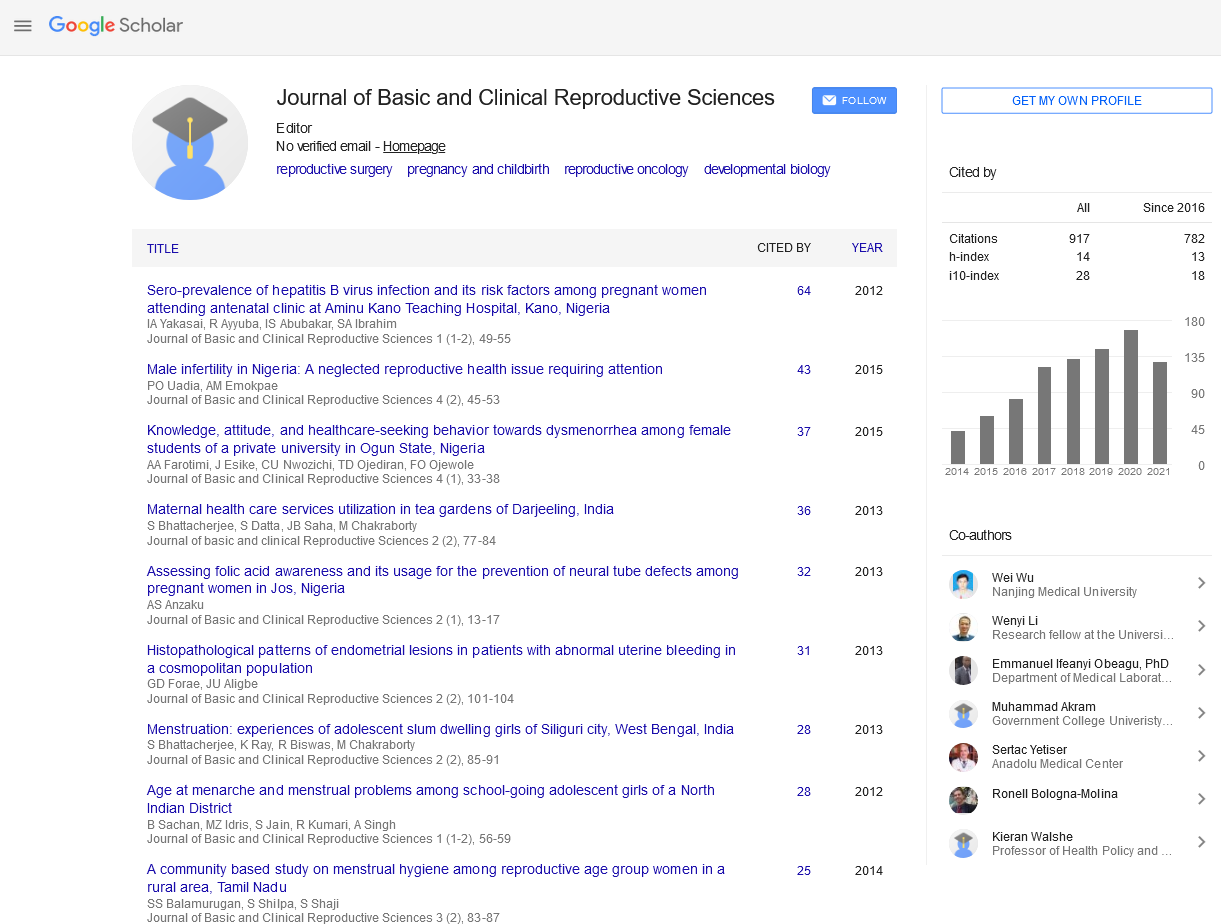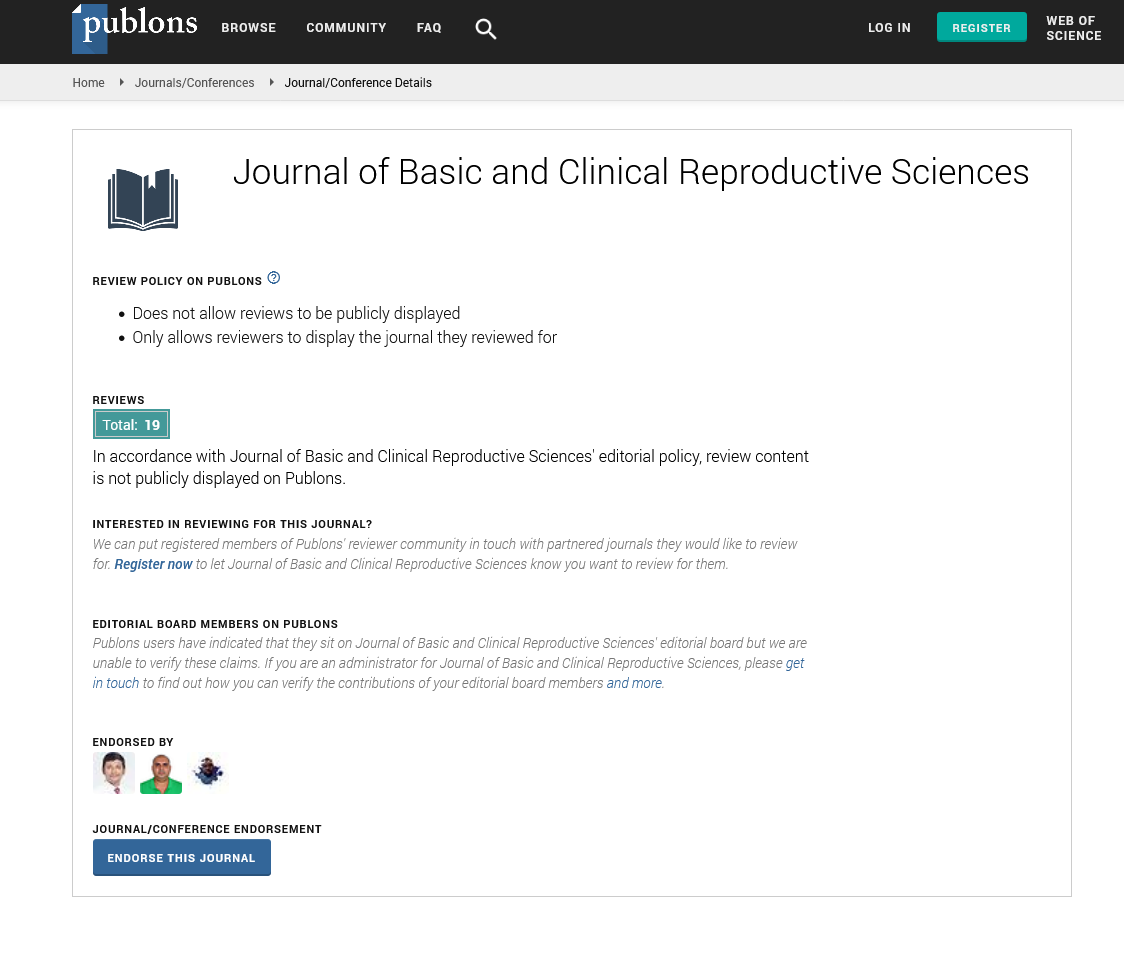Perspective - Journal of Basic and Clinical Reproductive Sciences (2023) Volume 12, Issue 4
Embryology: The Artistry of Nature’s Creation of Life’s Genesis and Maturation in the Womb
Received: 31-Jul-2023, Manuscript No. JBCRS-23-114370 ; Editor assigned: 02-Aug-2023, Pre QC No. JBCRS-23-114370 (PQ); Reviewed: 16-Aug-2023 QC No. JBCRS-23-114370 ; Revised: 23-Aug-2023, Manuscript No. JBCRS-23-114370 (R); Published: 30-Aug-2023
This open-access article is distributed under the terms of the Creative Commons Attribution Non-Commercial License (CC BY-NC) (http://creativecommons.org/licenses/by-nc/4.0/), which permits reuse, distribution and reproduction of the article, provided that the original work is properly cited and the reuse is restricted to noncommercial purposes. For commercial reuse, contact reprints@pulsus.com
Description
Embryology is a fascinating field of biology that explores the development of organisms from the moment of fertilization through various stages of growth and differentiation. Embryology plays a pivotal role in evolutionary biology by providing insights into the shared ancestry of species and the mechanisms driving evolutionary change. It is the study of the development of organisms from a single cell to a complex multicellular organism, has been a subject of human curiosity for centuries. The intricate journey from a fertilized egg to a fully formed individual is a testament to the marvels of nature. The history of embryology can be traced back to the ancient Greeks, including Aristotle, who made observations about the development of chicken embryos. However, it was not until the invention of the microscope in the 17th century that embryology truly took off. Scientists like Antonie van Leeuwenhoek and Marcello Malpighi made significant contributions by observing embryos under the microscope. The 19th century saw the emergence of developmental biology as a distinct discipline. The work of Karl Ernst von Baer and others laid the foundation for understanding the principles of embryonic development. Charles Darwin’s theory of evolution also provided a framework for interpreting embryological data, highlighting the common ancestry of species through their developmental processes. The presence of homologous structures, such as limb buds in vertebrates, highlights evolutionary relationships. Ernst Haeckel proposed the idea of “ontogeny recapitulates phylogeny,” suggesting that an organism’s embryonic development retraces its evolutionary history. While this concept has been oversimplified, it underscores the link between development and evolution. Developmental processes can impose constraints on evolutionary change. Certain body plans and developmental pathways may be difficult to alter, influencing the direction of evolution. The fusion of sperm and egg to form a zygote, which contains the full set of genetic information from both parents. Rapid cell divisions that result in the formation of a blastocyst, a hollow ball of cells. The process by which the blastocyst transforms into a three-layered structure, known as the gastrula, comprising the ectoderm, mesoderm, and endoderm. The formation of specific organs and tissues from the three germ layers, guided by complex signalling pathways and genetic regulation. Cells within each tissue or organ acquire specialized functions, becoming nerve cells, muscle cells, or other cell types. Embryonic development provides evidence for the shared ancestry of different species and helps unravel the genetic and molecular mechanisms underlying evolutionary change. Understanding normal development is crucial for identifying the causes of birth defects and diseases that arise from abnormal development, leading to advances in diagnosis and treatment knowledge of embryonic development is key to unlocking the potential of stem cells and tissue regeneration for treating injuries and diseases. In Vitro Fertilization (IVF) and other assisted reproductive techniques rely on a deep understanding of embryology to help couples achieve pregnancy.
Conclusion
Embryology continues to captivate scientists and researchers with its mysteries and revelations about life’s origins and development. From its historical roots to its relevance in modern biology and medicine, embryology remains a base of our understanding of life itself. Embryology and evolutionary biology are intertwined disciplines that shed light on the history and development of life on Earth. By studying the embryonic development of organisms, scientists can uncover evidence of shared ancestry and the mechanisms driving evolutionary change.


